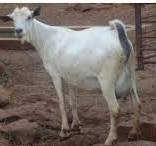To ensure healthy growth, high productivity, and good reproductive performance in goats, a well-balanced and stage-specific diet is essential. This guide outlines the key feeding and nutrition practices recommended for goat farming in Kenya, helping farmers enhance herd health, milk yield, and meat quality.
1. Balanced Diet Composition
– Proteins: Approximately 16–18% protein is ideal for growing kids.
– Carbohydrates: Provide energy for daily activities.
– Minerals: Especially calcium and phosphorus for bone and metabolic functions.
– Vitamins: Vitamins A, D, and E are crucial.
– Clean Fresh Water: Always ensure goats have access to clean water.
2. Natural Grazing and Pasture Management
Natural grazing remains one of the most cost-effective feeding strategies for goats in Kenya. Farmers should allow goats to graze 6–8 hours daily and use rotational grazing systems to prevent overgrazing. Maintaining grass height between 4–6 inches ensures optimal forage quality, while planting drought-resistant forage species enhances year-round feed availability.
3. Supplementary Feeding
Supplementary feeding is crucial during pregnancy, lactation, and dry seasons when natural pastures are scarce. Farmers can use commercial concentrates, Rhodes grass hay, or Lucerne to maintain nutrition levels. In addition, provide salt licks for essential minerals and grains such as maize and barley for energy boosting.
4. Use of Fodder Trees
Fodder trees are nutrient-rich and sustainable feed options that enhance goat diets. They can be intercropped with food crops and harvested throughout the year. Commonly used fodder trees in Kenya include:
– Calliandra: High protein content.
– Leucaena: Rich in nutrients and improves milk yield.
– Sesbania: Excellent for dairy goats.
– Gliricidia: Drought resistant and easy to propagate.
5. Feeding Management
Proper feeding management ensures goats utilize feed efficiently. Farmers should feed goats at 3–4% of their body weight daily, increasing amounts for pregnant and lactating does. Regularly monitor body condition and adjust feed accordingly. Establishing a feeding schedule helps maintain digestive health and reduces feed wastage.
6. Additional Practices
To further reduce feed costs and improve nutrition, farmers can incorporate alternative feed sources such as Moringa leaves, which promote faster growth. Crop residues like maize stalks and vegetable scraps are also useful supplements, especially during dry periods.
7. Dairy Goat Specific Notes
Dairy goats in Kenya are often raised under zero-grazing systems where feed and water are provided. High-quality forage, concentrates, and adequate water intake are essential for optimal milk production. Farmers should prioritize consistency in feeding to prevent milk production drops and digestive disturbances.
Adopting these feeding and nutrition strategies is crucial for thriving goat farming in Kenya’s diverse climates. They improve growth rates, milk production, reproductive efficiency, and overall herd health.

